When you source your accommodation content from multiple suppliers and wholesalers, often on your hotel booking platforms, you will find there are duplicate rooms supplied by your supplier partners. The same room may appear twice, or even three times, or more. It may seem like a different room every time it appears with different images & room details like- bed type, smoking or non-smoking, prices, etc. However, they are the same rooms with different details.
Here’s what your customers experience in such a scenario:
They reach your booking platform, search online, find a room with stunning ocean views, and make a reservation. But when they arrive, the room looks nothing like the photos, and worse, it’s not even the one they booked.
What comes next is an evil review, or maybe an Instagram story or an X thread mentioning how bad (or fraudulent) your hotel booking platform is. You may compensate the customer, upgrade them to the best room, or even refund the full booking amount, but one thing is for sure- they’re never booking with you again and might as well spread the word.
Duplicate room listings, mismatched room details, and outdated room descriptions are common pitfalls on hotel booking platforms.
But you can easily solve them with a Room Mapping Solution. Let’s learn how.Room Mapping has become a popular solution in the accommodation booking space. Often facilitated by an advanced API, room mapping prevents travelers from encountering duplicate room listings on your booking page, ensuring that bookings are accurate and seamless.
Mapping all rooms against all providers is essential to ensure every room on your frontend is unique, it enhances customer satisfaction, mitigates the risk of negative reviews stemming from booking errors, and optimizes your bottom-line by maximizing occupancy rates.
Also Read: What is hotel mapping and why it matters for your online travel business
Same room, different names.
This is basically why you need Room Mapping on your hotel booking platform. But let’s look at the bigger picture here.
Let’s go back to what we discussed at the beginning of this blog-
In the absence of a Room Mapping API, the same rooms on your hotel booking platform will have different names and descriptions (from different suppliers).
The basic elements of a room description are the Room Type, Bed Type, View Type and a long list of possible amenities and services (e.g. accessible, pet-friendly, balcony, mini-bar, etc.)
Each accommodation supplier may edit the existing information differently, discarding or adding, creating overlaps, duplications and more.
Here’s an example:
| Supplier A | Supplier B | Supplier C | Supplier D |
Standard room king with sea view | Double standard king, sea view | Standard room with sea view kg | Double Std Sea king bed – 2 Per |
In the example above, the same room is described in four different ways by four different suppliers which makes it look like an extensive supply of different rooms within a specific hotel. When in reality, there is a much smaller number of room options at any given hotel.
This duplicate and poorly sorted room inventory created by different descriptions can leave your customers feeling confused and may cause them to lose trust in your platform, eventually leaving them with a bad experience.
You need Room Mapping to prevent such instances.
Room mapping standardizes the peculiar room details like bed size, room views, smoking/non-smoking, board types, etc., and displays competitive prices for the unique rooms available.
That said, let’s understand how integrating a Room Mapping API enhances hotel booking experiences.
Also Read: Effective strategies for OTAs to optimize conversions
Same room, different names.
This is basically why you need Room Mapping on your hotel booking platform. But let’s look at the bigger picture here.
Let’s go back to what we discussed at the beginning of this blog-
In the absence of a Room Mapping API, the same rooms on your hotel booking platform will have different names and descriptions (from different suppliers).
The basic elements of a room description are the Room Type, Bed Type, View Type and a long list of possible amenities and services (e.g. accessible, pet-friendly, balcony, mini-bar, etc.)
Each accommodation supplier may edit the existing information differently, discarding or adding, creating overlaps, duplications and more.
Here’s an example: In the example above, the same room is described in four different ways by four different suppliers which makes it look like an extensive supply of different rooms within a specific hotel. When in reality, there is a much smaller number of room options at any given hotel.
This duplicate and poorly sorted room inventory created by different descriptions can leave your customers feeling confused and may cause them to lose trust in your platform, eventually leaving them with a bad experience.
You need Room Mapping to prevent such instances.
Room mapping standardizes the peculiar room details like bed size, room views, smoking/non-smoking, board types, etc., and displays competitive prices for the unique rooms available.
That said, let’s understand how integrating a Room Mapping API enhances hotel booking experiences.
Also Read: Effective strategies for OTAs to optimize conversions A Room mapping API, is like a smart tool that helps hotel booking platforms organize and map room details accurately across different systems. Think of it as a translator that ensures every room’s features like bed size, view, or amenities are correctly listed no matter where the data comes from.
Let’s understand this with an example of Vervotech’s Room Mapping API that standardizes room data in just four steps:
Step 1: Data Collection
Enterprise-level web service collect room information.
Step 2: Data Standardization
Identification & standardization of raw data through Deep Learning algorithms.
Step 3: Data Processing
Analysis & grouping of similar rooms with identical parameters in one category.
Step 4: Outcome
Completely mapped rooms with accurate and detailed information.
This way, room mapping API ensures that:
- No single room is listed twice (no duplicate listings)
- Room descriptions are accurate (no incorrect details).
- Room listings are precise (no missing details).
For example, instead of seeing “Deluxe King Room” in one place and “Luxury Room with King Bed” in another, the API ensures it’s listed the same way everywhere. This level of data accuracy & precision builds trust and helps customers quickly find exactly what they’re looking for. Tripjack Records 30% Increase in Conversions with Vervotech’s Room Mapping Solution
Read full case studyWhen room information is clean and consistent, customers enjoy a smoother booking journey:
- Easier decision-making: Customers can quickly compare rooms and pick the one that suits them without digging through unclear or inconsistent data.
- Fewer errors: They get exactly what’s promised—no surprises or disappointments at check-in.
- Increased trust: Accurate listings make customers confident in their bookings, encouraging them to return to the platform.
For accommodation booking platforms, a room mapping solution reduces errors and prevents miscommunications between the platform and the hotels, reducing customer complaints, ensuring higher booking conversions, and establishing a stronger brand that people trust, and vouch for.



